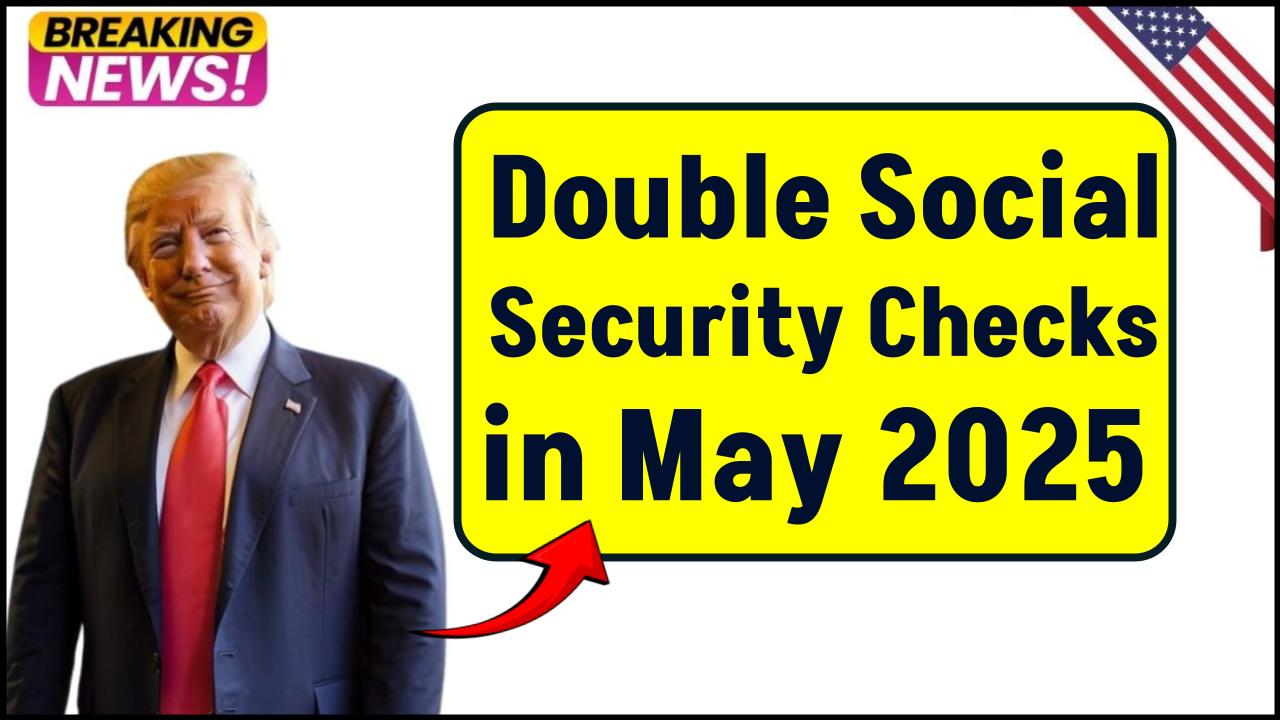On Social Security May 1 Payment day, eligible Supplemental Security Income (SSI) recipients will see their benefits deposited directly into their accounts. This news comes as part of continued efforts by the Social Security Administration (SSA) to ensure that payments are made on time and adjusted to meet the cost of living. Whether you are a retiree, a disabled individual, or a parent of a child with a qualifying disability, understanding these updates is essential.
The SSA has confirmed that starting May 1, 2025, SSI payments will be issued as scheduled, even with the many changes the program has undergone over the past few years. This announcement is especially important considering the adjustments and improvements resulting from legislative changes, such as the Social Security Fairness Act—which has significantly impacted benefit calculations and payment schedules.

Social Security Confirms New May 1 Payment
| Key Information | Details |
|---|---|
| Payment Date | May 1, 2025 |
| Who Qualifies | Supplemental Security Income (SSI) recipients |
| Why Two Payments in May? | June 1 falls on a Sunday, so June’s SSI is paid on May 30 |
| Maximum SSI Benefit (2025) | $967 (individual), $1,450 (couple) |
| Cost-of-Living Adjustment (COLA) | 2.5% increase for 2025 |
| Retroactive Increases | Avg. $6,710 due to repeal of WEP & GPO |
The confirmation of the May 1 SSI payment is a significant milestone for thousands of eligible Americans who depend on these benefits for their daily needs. With clear eligibility guidelines, consistent payment schedules, and valuable resources to ensure your information is current, recipients can plan their budgets with confidence. The modest 2.5% COLA and the reforms introduced by the Social Security Fairness Act further reinforce the promise of fair and timely support for those who need it most.
Understanding SSI and the May 1 Payment
Supplemental Security Income (SSI) is a federal program designed to help people with limited income and resources. It specifically targets groups such as seniors, the blind, and individuals with disabilities, ensuring they receive enough income to cover essential living expenses. Unlike Social Security retirement or disability benefits—which are based on an individual’s work history—SSI is a means-tested program that requires strict adherence to income and asset limits.
Who Qualifies for SSI?
To qualify for SSI benefits, you need to meet several criteria:
- Age or Disability Requirements: You must be 65 or older, or be blind, or have a qualifying disability.
- Income Limits: Your countable income must be below a set threshold. This includes wages, pensions, and other forms of income.
- Resource Limits: Assets are also taken into account. Typically, individuals must have less than $2,000 in assets, while couples must have less than $3,000.
- Citizenship and Residency: You generally must be a U.S. citizen or an eligible non-citizen residing in the United States.
By meeting these requirements, the SSI program ensures that benefits are directed to those who need them most.
Why May 1, 2025?
The SSA follows a structured payment schedule for SSI distributions. When the first of the month falls on a weekend or public holiday, the payment date is adjusted. In May 2025, the payment date has been firmly set for May 1. This adjustment guarantees that recipients have reliable access to funds—even if the calendar requires a shift in schedule.
Contextual Example:
Imagine you are a retired individual living on a tight budget. You rely on your SSI payments for everyday costs such as food, medications, and utilities. Knowing the precise payment date allows you to align your budgeting and expense planning accordingly. For example, if you know your funds will be available on May 1, you can schedule your bill payments and grocery shopping around this reliable date.
Practical Advice and Examples
Managing Your SSI Benefits
1. Verify Your Eligibility:
Make sure your income and asset levels remain within the required limits. You can find detailed eligibility criteria on the SSA’s SSI page.
2. Update Your Information:
Keep your personal and banking details current. Log into your my Social Security account regularly to confirm that your profile is up-to-date.
3. Budgeting with Confidence:
Create a monthly budget that accounts for the arrival of your SSI payment on May 1. Divide your spending into essential categories—such as housing, food, and healthcare—using a budgeting app or a simple spreadsheet.
4. Utilize Local Resources:
Many communities have assistance programs to complement SSI benefits. For further information on additional help, visit reliable sites like Benefits.gov.
Real-World Example:
Consider Sarah, a 68-year-old retiree who depends on SSI for her essential needs. Sarah updates her information on her my Social Security account every month and uses a budgeting tool to plan her expenses around the May 1 payment date. By doing so, she never faces a shortage of funds, ensuring she can cover her groceries, medication, and utilities without stress.
A Detailed Guide: Steps to Ensure Smooth SSI Payments
Step 1: Verify Your Current SSI Status
- Log into Your SSA Account:
Access your account at SSA.gov to review your benefits and check for notifications regarding payment dates. - Review Your Correspondence:
The SSA sends notices by mail or email. Keep an eye out for any communication confirming the May 1 payment.
Step 2: Update Personal and Banking Information
- Update Your Contact Details:
Ensure your address and phone number are current to avoid delays. - Verify Your Bank Information:
Make sure your direct deposit details are accurate. Direct deposits are the fastest and most secure way to receive your payments.
Step 3: Plan Your Monthly Budget Around Payment Dates
- Set Financial Goals:
Plan for emergencies or savings by mapping out a monthly budget that aligns with your SSI payment. - Schedule Bill Payments:
Align your regular expense payments (utilities, rent, medications) with your anticipated payment date. - Utilize Budgeting Tools:
Apps such as Mint or You Need A Budget (YNAB) can help you keep track of your income and spending.
Step 4: Understand State Supplements
- State-Specific Payments:
Some states provide additional SSI funds to supplement the federal benefit. Check with your state’s social services office or explore resources on Benefits.gov to see if you qualify. - Local Assistance Programs:
Investigate local community programs that can offer additional financial help if needed.
Step 5: Monitor the Payment Schedule Regularly
- Stay Informed:
Bookmark the SSA payment calendar on the official SSA website to stay updated on any changes. - Set Reminders:
Use digital calendars to remind you of important dates, such as the May 1 payment.
Step 6: Prepare for Payment Adjustments
- Embrace Variability:
Understand that payments may be adjusted due to the COLA or administrative changes. The 2025 Cost-of-Living Adjustment (COLA) is set at 2.5%, which may increase your monthly benefit. - Plan for Short-Term Delays:
Allow a few extra days beyond the confirmed payment date to account for any processing delays, especially over weekends or holidays.
Additional Insights for SSI Recipients
Navigating Social Security Scams: Safety Tips
Unfortunately, scams targeting SSI and Social Security beneficiaries are not uncommon. Here are some tips to protect yourself:
- Be Skeptical of Unsolicited Calls:
The SSA will never call you to ask for your Social Security number or personal banking details. If you receive such a call, hang up immediately. - Use Official Channels:
Always communicate directly through the SSA website or visit your local SSA office in person. - Protect Your Personal Information:
Do not share your Social Security number or banking information with anyone unless you are certain they are with the official SSA. - Report Suspicious Activity:
If you suspect a scam, report it to the Federal Trade Commission or contact your local law enforcement.
Exploring Digital Resources and Tools
Advances in technology have made it easier for SSI recipients to manage their benefits:
- My Social Security Account:
This secure portal allows you to view your payment history, update your information, and download important documents. - Budgeting Apps:
Tools like Mint, YNAB (You Need A Budget), or even a simple spreadsheet can help you manage your finances effectively. - Online Bill Pay Services:
Most banks offer bill pay options that can be scheduled around your SSI payment, reducing the risk of late payments.
Success Stories and Community Support
Numerous SSI recipients have successfully navigated the complexities of managing their benefits by staying informed and proactive. Many local community centers and online forums provide spaces where beneficiaries share their tips, financial planning strategies, and success stories. Engaging with a supportive community can offer both reassurance and practical advice. For example, online communities like those on AARP provide useful forums for financial assistance and benefit management.
Looking Toward the Future: Policy and Financial Sustainability
The SSA continuously evaluates its policies to ensure that benefits remain adequate despite changing economic conditions. With the implementation of the Social Security Fairness Act, many public sector employees and affected beneficiaries have seen marked improvements in their benefit amounts. However, experts caution that challenges still lie ahead, such as ensuring long-term sustainability of the program. The SSA’s annual reports and Congressional Budget Office (CBO) analyses provide valuable insights into these issues—resources that are crucial for anyone interested in the future of Social Security.
CPCB Recruitment 2025 Notification Out – Multiple Vacancies for MTS, Assistant, DEO & More
Frequently Asked Questions (FAQs)
Q1: What is the significance of the May 1 SSI payment?
A: The May 1 payment ensures that SSI recipients receive their benefits on a reliable schedule, which is crucial for budgeting and financial planning. This date has been set to accommodate weekends and holidays, ensuring timely deposits.
Q2: Who qualifies to receive SSI benefits?
A: To qualify, you must be 65 or older, or be blind or disabled, have income below the set limits, and possess assets below $2,000 (or $3,000 for couples). Detailed criteria are available on the SSA SSI eligibility page.
Q3: How does the 2025 COLA affect my SSI payments?
A: For 2025, a 2.5% Cost-of-Living Adjustment (COLA) will apply, which means your monthly SSI payments may see a modest increase. This adjustment helps counteract inflation and rising living costs. More details can be found on the SSA COLA page.
Q4: What should I do if my SSI payment is delayed?
A: If your SSI payment does not arrive on or near May 1, check your my Social Security account or contact your local SSA office. Delays can occur due to weekends or public holidays, so allow a few extra days before reaching out.
Q5: Are there extra state supplements for SSI?
A: Yes, some states provide additional SSI funds based on local cost-of-living adjustments. Check with your state’s social services agency or visit Benefits.gov for more information.
Q6: How can I protect myself from SSI and Social Security scams?
A: Always use official channels for communication with the SSA, be wary of unsolicited calls or emails asking for personal information and report any suspicious activity to the FTC.









